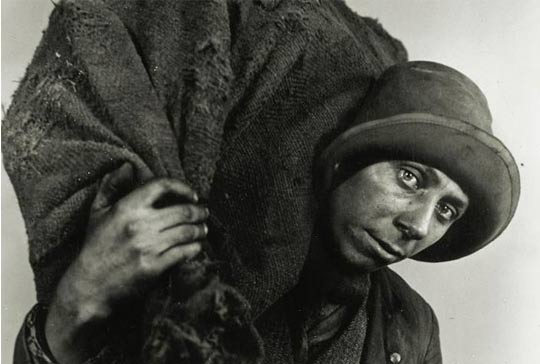ACTIVIST DOCUMENTS
Inspired by the explosion in the illustrated press and operating within a broad culture of political dissent, many photographers across central Europe turned to reportage and other documentary modes in the later 1920s and 1930s. Germany is the country best known for political activism in photography, but Austria, Slovakia, and Hungary established strong activist groups as well, and the Czech capital Prague hosted the greatest international exhibitions of “worker” or “social” photography held anywhere in the world. Many of these class-conscious photographs unflinchingly depict the physical and mental toll of labor in heartfelt, if pathos-laden, terms. The Hungarian Kata Kálmán published photographs of the working class alongside their biographies, in a plea to recognize her subjects as individuals rather than anonymous laborers. Other contemporaries noted the importance of capturing the full spectrum of a worker’s life, not just hard times, and of communicating the difficulties of agricultural labor rather than concentrating simply on industry, as called for by left-wing politics. Above all, activist documentary in central Europe did not oppose politics to art, but rather very often fused the two in an effort to revolutionize life and consciousness simultaneously.

Kata Kálmán, Coal Carrier, 1931 - view full image
- The Cut-and-Paste World: Recovering from War
- Laboratories and Classrooms
- New Women — New Men
- Modern Living
- The Spread of Surrealism
- Activist Documents
- Land Without a Name
- The Cut-and-Paste World: War Returns

